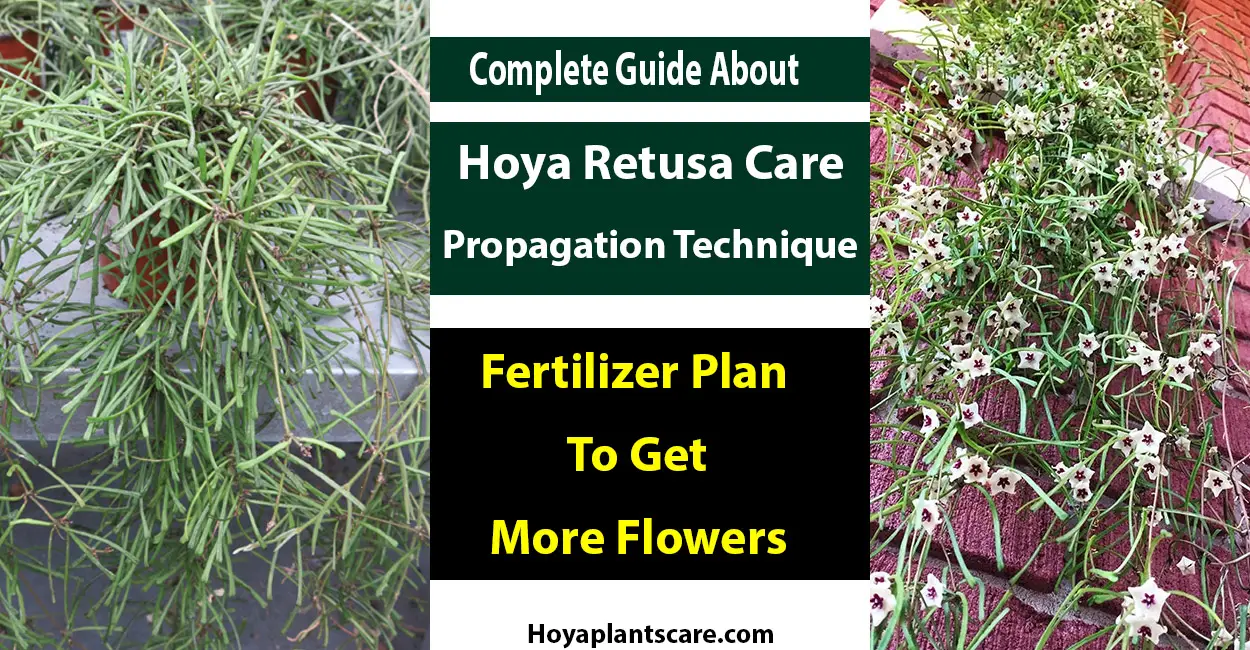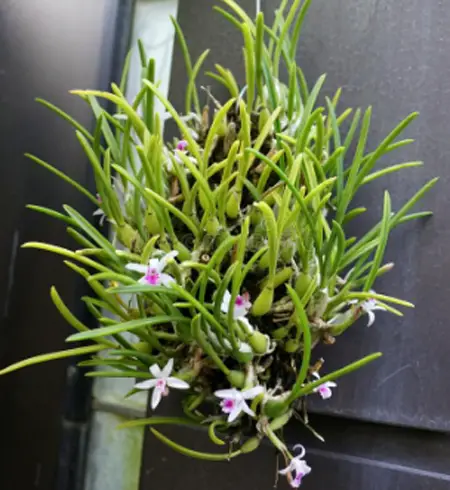
Hoya Retusa Introduction
Hoya retusa is a small, epiphytic plant that belongs to the Hoya genus. It is native to the tropical regions of Southeast Asia and is often referred to as the Wax Plant due to its thick, waxy leaves.
The plant is known for its small, round leaves and its ability to produce clusters of small, fragrant flowers. The flowers are typically white or pink in color and bloom in the spring and summer.
Common names for Hoya retusa include Wax Plant, Hindu Rope Plant, and Porcelain Flower.
Hoya retusa, also known as Wax Plant, is known for its small, fragrant flowers. The flowers are typically white or pink in color and bloom in the spring and summer. The smell of Hoya retusa flowers is described as sweet and pleasing. Some people have compared it to the smell of vanilla, while others say it has a more subtle, floral scent. The fragrance is not overpowering but subtle and pleasant, and it can be enjoyed even in small indoor spaces.

Cultivating Hoya Retusa
Hoya retusa prefers well-draining soil that is rich in organic matter. It can be grown in a variety of potting mixes, but a mix of peat moss and perlite works well.
The plant prefers bright, indirect light but can tolerate low-light conditions. It should be kept at temperatures between 60-80 degrees Fahrenheit.
Hoya retusa can be propagated by taking stem cuttings or by air layering. The cuttings should be allowed to dry for a day or two before planting and should be kept in a warm, humid area until roots have formed.
Caring for Hoya Retusa
Watering schedule: The plant should be kept consistently moist but not wet. Allow the soil to dry out slightly between watering.
Fertilizer recommendations: Hoya retusa can be fertilized with a balanced, water-soluble fertilizer every four to six weeks during the growing season.
Pest and disease management: Common problems include spider mites and mealybugs. These can be controlled with insecticidal soap or neem oil. The plant is generally disease-free.
Hoya Retusa in The Landscape
Hoya retusa can be grown in various settings, including as a houseplant or in a greenhouse. It can also be grown outdoors in tropical and subtropical regions.
When grown outdoors, the plant can be trained to climb a trellis or allowed to trail from a hanging basket. It can also be grown as a ground cover.
The plant pairs well with other tropical plants, such as ferns, bromeliads, and orchids.
Difference Between Hoya Retusa and Linearis
Hoya retusa and Hoya linearis are both plants that belong to the Hoya genus. While they have similar care needs and growth habits, there are several key differences between the two species.
- Appearance: Hoya retusa is a small, epiphytic plant that is known for its thick, waxy leaves that are round and small, while Hoya linearis is a climbing vine with elongated leaves that are thin and linear in shape.
- Flowers: Hoya retusa typically produces clusters of small, fragrant flowers that are white or pink in color, while Hoya linearis produces clusters of star-shaped, yellow-green flowers.
- Habitat: Hoya retusa is native to tropical regions of Southeast Asia, while Hoya linearis is native to the Himalayas and India.
- Growth rate: Hoya retusa is considered a slow-growing plant, while Hoya linearis can grow rapidly when provided with the right conditions.
- Size: Hoya retusa is a small plant, usually reaching about 6-8 inches in height, while Hoya linearis can grow to be quite large if provided with the proper support.
Overall, both plants are easy to grow and care for and are suitable for indoor or outdoor cultivation in tropical and subtropical climates. They are also great for adding a touch of tropical beauty to any garden.
Conclusion
Hoya retusa is a versatile and easy-to-grow plant that is well-suited for indoor and outdoor cultivation. With proper care and attention, it can produce clusters of fragrant flowers.
Remember that patience is key when growing Hoya retusa, as it can take a while for the plant to establish itself and produce flowers.
FAQs About Hoya Retusa
How often should I water Hoya retusa?
Hoya retusa should be kept consistently moist, but not wet. Allow the soil to dry out slightly between watering. It’s recommended to water once a week and to make sure the pot has drainage holes.
How much light does Hoya retusa need?
Hoya retusa prefers bright, indirect light but can tolerate low-light conditions. Place the plant in a location that receives bright, indirect light, but avoids direct sunlight.
Q: When and how does Hoya retusa bloom?
How can I control pests on my Hoya retusa?
Common pests on Hoya retusa include spider mites and mealybugs. These can be controlled with insecticidal soap or neem oil. Regularly inspecting the plant and quickly removing any pests you see can also help prevent infestations.
When and how does Hoya retusa bloom?
A: Hoya retusa typically blooms in the spring and summer, producing clusters of small, fragrant flowers. The flowers are typically white or pink in color. To encourage blooming, provide the plant with bright, indirect light, keep the temperatures between 60-80 degrees Fahrenheit, and fertilize regularly during the growing season.
How can I propagate Hoya retusa?
Hoya retusa can be propagated by taking stem cuttings or by air layering. The cuttings should be allowed to dry for a day or two before planting and should be kept in a warm, humid area until roots have formed.

